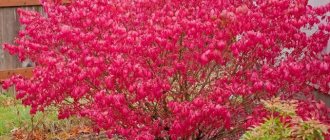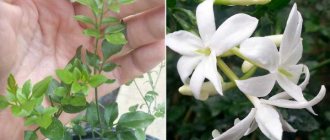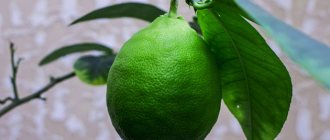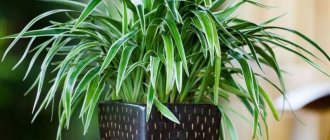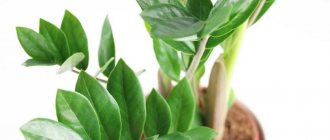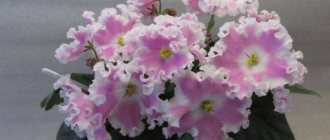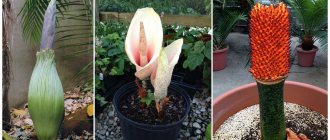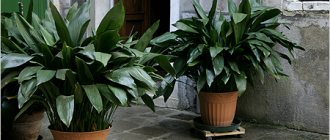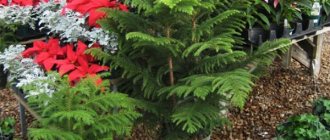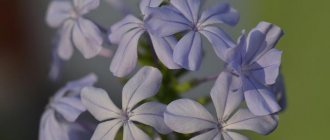Interesting information about nightshade
Nightshade (Solanum) is a genus of evergreen trees, shrubs, subshrubs, perennial and annual herbs belonging to the Solanaceae family.
The genus Solanum belongs to more than one and a half thousand plant species, distributed in warm areas of acceptable climate around the world. That is why the plant with small orange fruits has many popular names. You can hear: solanum, potato tree, Jerusalem cherry, Cuban cherry, indoor cherry. The South African continent and some countries of Southeast Asia are considered the homeland of the predominant part of the Solanaceae genus.
What is nightshade? The external characteristics of nightshade are absolutely not similar to each other, if, for example, you compare the same dark-fruited nightshade with potatoes, tomatoes, eggplants, or a valuable medicinal flower - black nightshade. In natural conditions, these are small shrubs covered with greenery all year round. The leaves are oblong oval shaped. Inflorescences are racemose or paniculate. Nightshade flowers are white, yellow, purple or pink, collected in racemose or paniculate inflorescences. Bright orange fruits, reminiscent of cherries, give the plant a special charm.
A houseplant with red berries called nightshade (solanum) has become a very common decoration and addition to the interior of apartments, offices, and balconies. And in order for indoor cherry to feel at ease, it needs to create conditions close to natural ones. Namely, air humidity should be high, do not forget about spraying and coolness in winter.
Botanical description
Nightshade (lat. Solanum) is a representative of plants of the Solanaceae family. The genus grows under natural conditions mainly in temperate and tropical zones of the South American continent. The genus includes more than 1,700 plant species. Representatives of the genus are herbaceous annuals and perennials, shrubs and trees. The stems are either creeping or erect. The leaves also come in different shapes depending on the type of plant. The species includes a large number of “food” crops, such as tomatoes, potatoes and eggplants, but there are also weed species that are also poisonous. Few species are grown in gardens, greenhouses and indoors. The main ones are edged nightshade, pepper and dark brown. When growing nightshade indoors, you will have to maintain high air humidity, provide regular spraying, and cool temperatures in winter. If home nightshade is not pruned, it may lose its decorative qualities.
Characteristics of the nightshade family
Solanaceae is a family of plants that, as of 2022, has 115 genera and more than 2,700 species. People encounter many of them every day: indoor flowers, common vegetables, tobacco and medicinal plants.
Representatives of the nightshade family
Representatives are divided into three life forms:
- herbs;
- shrubs (erect and creeping);
- trees (nightshade or acnistus).
Together with the Convolvulaceae family, they form the general order of Solanaceae.
Beneficial features
The healing properties of the herb include: antipyretic, diuretic, analgesic, antirheumatic, sedative, expectorant, anthelmintic, spasmodic, laxative, hemostatic, wound healing, anti-inflammatory, antiseptic.
The stems, leaves, fruits and flowers of the plant are used for medicinal purposes. Leaves and stems are harvested from July to September, dried in the fresh air or in thoroughly ventilated areas, the dried raw materials are suitable for use for 6-8 years. The fruits of black nightshade are harvested in late autumn, when they are already fully ripe, and consumed fresh or dried in dryers; they can also be frozen or stored grounded with honey or sugar.
general information
False pepper nightshade is a perennial evergreen plant that belongs to the nightshade family. The stems branch and become woody over time; the plant can grow up to 50 cm in height.
The leaves are medium-sized, oblong, glossy, arranged in pairs and densely on the branches. The flowers are formed small, shaped like stars, the petals are painted white.
Photo of nightshade
After flowering, round fruits are formed that look like cherries. As they mature, their color changes from pale orange to red.
Growing conditions for solanum
Nightshades belong to quickly degenerating plants that require regular replacement. Repeat flowering and fruiting can be achieved only by keeping the plant cool, regular pruning and high-quality fertilizing. Lighting is critical for fruiting.
Lighting and placement
Indoor nightshades are so light-loving that it is best to place them exclusively on window sills. For enviably abundant fruiting, nightshades will need a sunny place, but with protection from the aggressive midday sun. Eastern and western window sills are ideal for this plant.
In winter, the lack of light must be compensated by moving to southern windows or additional lighting.
Temperature and ventilation
Nightshades cannot be grown without lowering the air temperature during fruiting (the fruits last a long time only at temperatures below 18 degrees). From November to the end of February, it is better to keep the bushes at a temperature of 6 to 10 degrees, with maximum permissible values of indicators from 12 to 15 degrees.
Without a cold winter, nightshades do not bloom again, and therefore do not bear fruit. The plant is transferred back to room temperature in early spring or February, immediately after transplantation. But even in summer, it is better to protect nightshade from the heat, limiting maximum temperatures to 23-25 degrees. The beauty of the bushes and the abundance of fruiting will only benefit from differences between day and night temperatures.
Nightshade loves fresh air; in the summer it is better to move it to the garden or balconies. While staying indoors, especially during the cool period in autumn and winter, the plant should be protected even from small drafts.
Today, variegated varieties of indoor nightshade are also on sale. © w-ogrodzie
Toxicity and medicinal properties of the flower
Many people are concerned about the question: is indoor nightshade poisonous or not? Unfortunately, all parts of the plant are poisonous. Experts do not recommend growing this plant in a house where there are small children.
When choosing a nightshade variety to keep in an apartment, you need to start from how you plan to use it. If for purely decorative purposes, take the false pepper variety.
He is poisonous, but very beautiful. For medicinal purposes, pepper nightshade is chosen. It is used in the treatment of sore throat, healing of cuts and minor wounds.
In homeopathy, the plant is used to combat skin diseases, relieve ear pain, and treat rheumatism and gout.
All nightshade medicines that you decide to prepare at home must be made in accordance with the exact dosage. It is advisable to consult a doctor.
What is the appeal of indoor nightshade?
As you already understood, a houseplant with orange berries is nightshade, or solanum. Belongs to the nightshade family. Its homeland is the tropical part of South America.
There are various rumors about him. Some flora lovers are afraid to keep it at home. It turns out that the bright berries for which the flower is valued have poisonous properties. The fruits should not be eaten. Be careful if there are small children in the house. Place the plant on high, inaccessible shelves and cabinets, or avoid the flower altogether.
Nightshade does not produce any toxic fumes. If he just stands indoors, he won't cause any harm.
Nightshade is a small evergreen shrub. The leaves are shiny, oblong in shape. The fruits are large, similar to cherries, and have a fiery orange color.
A houseplant with orange berries, a photo of which will prove its beauty, will, with proper care, delight you with its ovaries and flowers. All this creates a beautiful picture. Therefore, nightshade is an excellent room decoration and addition to the interior.
Beautiful decorative varieties
But a separate group should include decorative nightshades, which can be dangerous, but are an excellent solution for landscaping a backyard area. Some excellent options for site decoration include the following varieties:
- jasmine;
- papillary (female fruit, apple of Sodom, fox face, five-fingered eggplant);
- gigantic;
- curly (Chilean potato tree).
For decorative purposes, it is proposed to cultivate false pepper nightshade. It is also known as Christmas or Jerusalem cherry. No less beautiful are the nightshades of Rantonnetta, Seaforth, and Wendland.
The most popular varieties
The nightshade family has about 1,700 members. The most common types of solyanum are kept at home, as well as in gardens and greenhouses.
Types of nightshade
In nature, there are several hundred species of nightshade in the form of trees and shrubs, but in cultivated floriculture you can more often find two varieties:
S. pseudocapsicum (false pepper) is a shrub up to 120 cm tall with long lanceolate or oval leaves. The fruits can be either orange-red or yellow, the flowers are white, five-membered.
Nightshade (Solanum pseudocapsicum)
S. capsicastrum (pepper-shaped) - similar to the previous variety, but different in size. Can be grown both at home and in open ground in the garden.
Pepper nightshade (Solanum capsicastrum)
Curly , this nightshade species is an evergreen vine. The flowers are shaped like stars, the fruits are light yellow in color. It is unpretentious in maintenance and is often used to decorate gazebos and walls. Unlike many representatives of its species, it tolerates cold well. Therefore, it can be used on external facades.
Solyanum vendlana is a climbing evergreen shrub that can grow up to 6 m in height. There are small thorns on the branches. The leaves are long (up to 10 cm), dissected in shape. The lower foliage is larger (up to 25 cm). This species has very beautiful purple-lilac flowers in the shape of a bell.
Which type of nightshade to choose is a matter of taste. It is also worth considering the size of the flower. Large spreading representatives are suitable only for large houses.
Types of nightshade with photos and names
Jasmine nightshade (Solanum jasminoides)
This species is native to Brazil. It is represented by evergreen shrubs that have thin, climbing stems without pubescence. Their length can reach up to 400 cm. The tops of the stems are decorated with elongated, ovoid, whole-edged simple leaf plates, the surface of which is without pubescence. In the lower part of the stems, glossy trifoliate foliage most often grows, the width of which is about 30 mm and the length is up to 70 mm.
As a rule, quite lush flowering is observed from early March to mid-October. The bluish flowers reach about 20 mm in diameter, and they are collected in apical paniculate inflorescences. The deep red fruits have a diameter of about 15 mm.
Giant nightshade (Solanum giganteum)
The species is represented by a branching evergreen shrub, the height of which can reach up to 6 meters. The surface of the thick branches is covered with pubescence in the form of whitish hairs, as well as short thorns. On the shoots there are elongated oval dark green leaf plates, the length of which is about 25 cm. On the underside of the foliage there is pubescence, represented by white hairs.
The bush blooms from mid-July to the end of August. Corymbose apical inflorescences are formed on the plant, consisting of hanging dark purple flowers that are relatively small in size. The species is rare in home culture; most often it can be seen in greenhouses.
Seaforth's nightshade (Solanum seaforthianum)
The species is represented by a highly decorative evergreen shrub, the height of which is about 5–6 meters. Its climbing stems are decorated with lanceolate, less often ovate-lanceolate leaf blades. They are odd-pinnate, entire and slightly wavy. The bush blooms from early March until mid-to-late autumn. The axillary panicle inflorescences consist of pendulous pale lilac flowers. The ovoid berries are red-orange in color.
Wendland nightshade (Solanum wendlandii)
In nature, the species is found in the mountainous regions of Central America at an altitude of 2000 to 3000 meters. It is represented by evergreen branching shrubs, the height of which is about 4 meters. The surface of the climbing branches is covered with short thorns. In the upper part of the stems, the foliage is oblong-elliptical, and its length is about 10 centimeters. At the bottom of the branches there is three-lobed foliage of a dark green hue, the width of which is about 10 centimeters and the length is up to 25 centimeters.
Blooms in the summer months. Apical corymbose panicles form on the bush. Densely growing purple flowers reach 50 to 60 mm in diameter. The color of the fruit is deep purple.
Nightshade (Solanum crispum)
This decorative flowering species is characterized by fast growth and climbing stems. Blue-purple flowers are collected in apical corymbs.
Nightshade (Solanum pseudocapsicum)
The species is represented by a non-deciduous subshrub, the height of which is about 50 cm. The branching stems are decorated with dark green elongated lanceolate leaf plates.
With optimal care, the bush blooms and bears fruit all year round. Single small flowers are painted white. Externally, the fruits are similar to cherries. Their color depends on the degree of ripening and can vary from green to deep red. The berries are very bitter and should not be eaten.
Pepper nightshade (Solanum capsicastrum)
The species is also popularly called “Jerusalem cherry.” An evergreen low-growing subshrub can reach a little more than half a meter in height. The elongated, lanceolate, bluish-green leaf blades have a wavy edge and vary in size.
The bush blooms from June to August. Single small flowers are painted white. The red fruits reach about 20 mm in diameter and contain poison.
Nightshade Pepper (Cuban Cherry) Unpretentious Plants for Beginners
Reproduction
There are two methods for propagating nightshade: seeds and cuttings. By the way, the size of the fruit depends on the method of reproduction. Cuttings require time to root and adapt; fruits appear on them after a long time and are not large in shape.
Indoor nightshade produces strong bushes from seeds, and its fruits delight with bright color and decent size. Let's consider both methods in more detail.
Seeds
You can buy ready-made seeds or get them yourself from mature plants that bear fruit. First, they need to be disinfected in a weak solution of potassium permanganate, dried and distributed over the surface of the soil, sprinkled with a small amount of wet sand on top.
Cover the container with seeds with film or glass. Before sprouts appear, the greenhouse is periodically ventilated and the soil is moistened.
The emergence of seedlings should be expected in 2–3 weeks. As soon as the sprouts have appeared safely, the shelter is removed and regular watering and loosening of the soil begin. After the sprouts have formed 2-3 strong and healthy leaves, they can be planted in separate pots.
Cuttings
Choose healthy and strong branches. They are cut to a length of 10–15 cm and immediately planted in a pot. The soil should consist of equal parts sand and peat. Then the cuttings are covered with a glass jar and placed in a warm place.
The roots sprout in 2–3 weeks. It's time to transfer them to stationary pots with soil in the form of a mixture of sand, humus and peat. As soon as the young bushes are transplanted, they pinch out the upper shoots.
Reproduction methods
Cuttings
Stem cuttings are used to propagate indoor nightshade. After the plant is pruned in the spring, the remaining pieces are not thrown away. Select the most powerful and completely healthy sections and plant them for rooting. To do this, you can use a mixture of peat and sand, or vermiculite, or just sand.
When the cutting takes root, it is planted in a permanent individual pot, which is filled with an earth mixture consisting of sand, turf and humus soil (1: 1: 2). Don't forget to make a drainage layer at the bottom of the container. Pinch the tops of the stems of the transplanted bush to enhance its branching. During the summer period, you can make several light prunings, which will also help stimulate the plant to tiller.
Pruning and propagation of nightshade. Results after six months
Growing from seeds
To propagate nightshade, the seed method is also used. Start by filling a small container with sifted leaf soil. Distribute the seed material evenly over the surface of the substrate. Cover the seeds with a thin layer of sand. The crops are slightly moistened with a spray bottle, covered with glass or film on top and transferred to a place where it is always warm (about 22 degrees).
The first seedlings should appear after about 15 days. As the seedlings grow and develop, they will need 2 picks. Then the bushes are transplanted into a soil mixture of turf and humus soil, as well as sand (1:2:1). Next, they are cared for in the same way as rooted cuttings (see above).
Simple rules for growing berry mosaics at home
It is not difficult to grow a crop on your windowsill. It thrives in a variety of soils. The main condition is that the soil must be loose. Often, fans of home crops grow indoor nightshade from seeds, carefully monitoring its development. The process begins in late May or early June.
The seeds are evenly placed in small containers filled with suitable soil. Then they are covered with a layer of sand about 1 cm and irrigated with a spray bottle. The containers are covered with plastic wrap and placed in a room where the temperature is not lower than 22°C. It should also have plenty of daylight. The first shoots will turn green on the surface of the earth in about 14 days. When they get stronger and there are 3 leaves on the shoots, the sprouts dive into other containers. After 30 days, the grown seedlings are transplanted again, but to a permanent habitat.
The last dive is carried out when the nightshade bushes grow to 15 cm in height.
When the plant takes root, you need to know the rules of how to prune nightshade and not harm it. The procedure is performed several times a year. At the end of February or beginning of March, all shoots of the crop are shortened by a third of the main length. It is best to do this when all the berries are ripening and when the foliage turns yellow.
To effectively form an indoor nightshade bush, additional pruning is carried out in April or early May. The procedure is repeated before the buds open. To increase the bushiness of the crop in the fall, new shoots are pinched to branches where there are no buds and fruit ovaries. As a result, a cute decorative decoration strewn with bright fruits will appear on the windowsill.
Lighting
Nightshade should be provided with as much light as possible. If it is deficient, it can shed not only buds, but also fruits and leaves. To obtain good fruiting, good lighting is necessary. In winter, it is advisable to illuminate nightshade artificially. If this is not possible, then place it on the most illuminated windowsill near a south-facing window. In winter, the sun's rays are not so burning, so they will not harm the plant. In summer, it is advisable to take nightshade out into the fresh air. There it will rest well, develop, and gain strength for winter flowering and fruiting.
Content temperature
In winter, the optimal temperature for keeping it is quite low and lies within +12-15 degrees. This is an additional reason to place it on the windowsill, where the air temperature is lower than elsewhere. High room temperature is the most common reason why nightshade leaves turn yellow and fall off in winter. In summer, the air temperature is not particularly important for this plant, especially if it is located outside. On average it lies within +18-25 degrees. The range, as you can see, is wide and small deviations from it are not critical.
Note. Indoor nightshade really does not like temperature changes and drafts.
Watering
During the growth, flowering and fruit formation stages, nightshade should be watered abundantly. Do not allow the soil to dry out. When the flower goes into retirement (autumn–winter), it is rarely watered.
Spraying
Indoor nightshade must be sprayed frequently. To do this, use pre-settled water at room temperature. Spraying is especially important when kept warm in winter. You can also place a small container of water near the plant to increase the humidity level.
Top dressing
In order for a plant to bloom profusely and bear fruit, it needs a large amount of nutrients. Feed the plant in the spring-summer period once every 2 weeks. For this purpose, complex fertilizer for flowering plants is used. In winter, you can not add fertilizers to the soil or feed it once every 4 weeks (you should use ½ of the recommended dose).
Trimming
It tolerates pruning well. And they do it after the nightshade stops bearing fruit, so that it does not lose its decorative effect. In the last weeks of winter, one can often observe yellowing and falling leaves. A procedure such as pruning significantly improves the condition of the plant. Be sure to shorten the main stem, as this will provoke the growth of side branches. You should also pinch their ends.
Transfer
It is recommended to replant in the first weeks of spring, before intensive growth begins. The soil should be loose and easily permeable to air. Do not forget about a good drainage layer, which may consist of expanded clay. It is needed so that excess liquid can freely leave the pot. First, the plant is cut back by approximately 1/3, and then planted in new soil.
This plant does not live very long. So, it soon grows out and loses its decorative effect. Therefore, some gardeners advise not to transplant nightshade, but to root a cutting taken from it.
Nightshade pot
A plastic or ceramic pot is suitable for growing indoor nightshade, as long as it has drainage holes in the bottom. Its size should be slightly larger than the root system of the plant. In a container that is too spacious, the soil may become acidic, which will lead to the death of the plant.
Priming
The soil for growing nightshade must be sufficiently nutritious and loose. It is made up of equal parts of turf soil, humus and sand. For growing, you can also use a universal substrate for industrially produced indoor plants.
At the bottom of the pot, be sure to arrange a drainage layer of expanded clay or river pebbles.
Pests and diseases
The most common nightshade pests are:
- whitefly . First, green larvae of this pest appear, which subsequently turn into small midges. Larvae and adults feed on nightshade sap. The plant begins to fade, its leaves turn yellow and fall off. To combat whiteflies, ready-made preparations for this pest are used. To completely destroy whiteflies, nightshade must be sprayed at least 3 times, with an interval of 3-4 days. Before each treatment, it is necessary to remove all damaged leaves;
- orange aphid . Colonies of these pests can be found on the underside of leaves. Like the whitefly, the orange aphid feeds on plant sap. As a result, the leaves turn yellow, curl and fall off, and the plant gradually dries out. A strong solution of laundry soap works well against orange aphids. The bush should be sprayed with it 2-3 times within one week.
Important! When working with soap solution, it is necessary to avoid getting it on the soil.
- red spider mite . This pest appears on nightshade when indoor air humidity is low. When infested by a mite, a thin cobweb with red dots appears on the stem and leaves. To get rid of spider mites, it is necessary to increase the general humidity in the room and regularly spray the plant with warm water. If these measures are not successful, then you should use acaricides. Instructions for use can be found on the packaging of the drug.
Fruiting
During flowering in the natural habitat, pollen is carried by even a slight wind. If it is not possible to keep the plant on the balcony or garden while the buds are blooming, you will need to pollinate it yourself to produce berries .
To do this, you need to take a regular painting brush with soft bristles and brush it over all the stamens with pollen. Attention! If you do not carry out this manipulation, then there is a chance that you will not get the berries or their quantity will be minimal.
Rest period
In winter, nightshade requires a period of rest. To do this, place the pot with the plant in a cool, well-lit place at the end of October. The optimal temperature for nightshade in winter is +13-15°. When kept warmer, the plant begins to suffer from spider mites and whiteflies.
A smart approach to caring for indoor nightshade
Since the plant came to Europe from tropical countries, its maintenance conditions must correspond to its natural habitat. A reasonable approach to caring for indoor nightshade at home leads to remarkable results. Exotic berries will become an exquisite decoration for your living space, turning it into an oasis of peace and pleasure.
The basic rules of care are to create suitable conditions for the culture, which include:
- lighting;
- humidity;
- temperature regime;
- watering;
- fertilizing
Let's look at each procedure in detail to grow an exotic flower at home.
Sufficient light
Practice shows that proper lighting directly affects the decorative effect of nightshade. Throughout the season, the plant needs diffused light. Therefore, it is placed on windows facing east or west. When winter comes, the flower feels wonderful on the south side. With insufficient light, nightshade develops poorly and bears a small amount of fruit.
Reasonable temperature and humidity control
For the successful development of a tropical plant indoors, it is necessary to maintain an optimal temperature regime. In spring and summer it ranges from 18 to 25°C, and in winter it reaches 12 or 15°C. If the temperature regime is violated, the flower will lose all its berries and foliage. This is one of the reasons why nightshade leaves fall at the most inopportune moment.
The plant does not like drafts, so when ventilating the room, it is better to remove the pots with the crop to another place.
Since nightshade is native to the tropics, it needs regular spraying. Also, the flowerpot with the crop can be placed in a shallow tray with moistened drainage material. The main thing is that there is no direct contact with water. Insufficient air humidity has a detrimental effect on crop development. Therefore, gradually losing vitality, the nightshade dries out and may eventually die.
A wise approach to watering
During intensive development, in spring and summer, the plant especially needs moisture. As soon as the top layer of soil dries out, and this happens quite quickly, it should be watered immediately. With the onset of autumn, and then winter, the amount of watering is reduced. As a result, the bush will always decorate the living space.
For irrigation, it is advisable to use settled water at approximately room temperature.
Reliable beauty stimulant - nutrition
If a person stops eating, the first thing that happens is that the beauty disappears from his face. Likewise, without feeding, a tropical guest will not be able to bear fruit abundantly. For feeding, you can use liquid complex fertilizers. They are applied once every 14 days during the period of fruit formation or growing season. After the formation of berries, fertilizing is applied once a month.
Winter and summer nightshade care
Caring for a nightshade indoor plant in the cold and warm seasons has its own distinctive features. Features of seasonal care spring-summer .
- Young seedlings are watered as the soil dries.
- During the growth period, fertilizing is not needed. It is enough to carefully loosen the soil along the edges of the flowerpot so as not to injure the roots.
- When a nightshade blooms, it needs help transferring pollen from one flower to another (to pollinate).
- Upon reaching the age of 4-5 years, the plant is transplanted into a substrate mixed with turf.
- With the onset of summer, the flower is taken out into the open air to a shaded place protected from drafts.
- Water abundantly, adding fertilizer to the soil at least once every 2 weeks with a mixture of useful substances for tomatoes. Liquid fertilizers such as “Ideal” or “Rainbow” also give a good effect.
- Spray the leaves twice a day - morning and evening.
Features of seasonal care autumn-winter.
- As cold weather approaches, reduce the intensity of fertilizing and watering (water once every 10 days with soft water without chlorine). Nightshade should be in a dormant period from October to February.
- The pot with solyanum is placed in a cool, illuminated place with high humidity.
- Ventilate the plant once a week.
- At the end of February, the cherries will begin to wake up. During this period, you need to increase watering and start spraying.
Indoor nightshade - propagation by seeds and cuttings
Nightshade can be propagated by seeds and cuttings. In the first case, seeds from ripened fruits are used. They are sown in peat or any other loose soil and lightly sprinkled with sand. The soil should be constantly moistened with a spray bottle. It is better if the container with the seeds is placed in a warm place and covered with film. As they germinate, young plants dive 1-2 times.
Indoor nightshade - propagation by seeds
You can grow indoor nightshade faster by cuttings. The branches remaining after pruning are used as cuttings. They take root well in a substrate of peat and leaf soil and grow very quickly, producing new shoots.
Possible difficulties when growing indoor nightshade
There aren't very many of them. But the main difficulty is that sometimes the nightshade does not want to bear fruit or the fruiting is scanty. The reason for this is under-pollination of the plant. Most often, this happens to plants that are constantly in the room and do not have the opportunity to fully pollinate. In this case, nightshade needs help. Artificial pollination of nightshade is not difficult. It is enough to walk over the flowers of the plant with a soft brush, transferring pollen from flower to flower.
The leaves are falling
Perhaps the problem is lack of moisture. The problem is especially acute in hot weather. This can also happen with excessive watering, when the roots begin to rot.
The berries are falling
If nightshade fruits begin to fall at the wrong time, it lacks light and humidity. It is worth moving the pot to a place where there is more light and spraying it more often.
No ovaries
The reason is that pollination did not occur. You can do this yourself using a soft bristle brush. Flowers are naturally pollinated only in the open air.
Spider mite
This pest affects many indoor plants. Its appearance is determined by the formation of small cobwebs and dark spots on the foliage. The plant begins to gradually dry out. To eliminate the problem, the foliage is sprayed with chemicals (Decis, Phosbecid), alternating with a soap solution.
Diseases and pests of indoor nightshade
The main pests that very often attack indoor nightshade are whiteflies and aphids. To avoid trouble, it is best to constantly monitor the condition of the leaves. If the plant is already affected, insecticides are used against insects. You can protect nightshade from pest attacks by providing it with good ventilation and appropriate air temperature.
Other problems that can overshadow the owners of a charming bush include the lack of fruits, which give the plant its decorative appearance. In this case, artificial pollination of flowers will be required if the nightshade is indoors, or you can simply take it outside for a few days.
Another feature of this ornamental tree is its poisonous fruits. It is believed that in the homeland of nightshade they are used to prepare medicinal decoctions, but you still need to be careful and keep the berries away from children.
general description
The shrub grows approximately 50 cm in height.
On highly branched shoots there are dark green leaves. The leaf shape is oval or lanceolate, slightly wavy. The leaves reach 10 cm in length and 1-2 cm in width. Small white flowers, about 1 cm in diameter, are star-shaped . The flowering period is almost all year round. Inflorescences are arranged singly.
In place of the flowers, small fruits appear, about 3 cm in diameter. At first they are green in color. Then, during the ripening process, they change it to orange and rich red. In appearance, the nightshade fruit resembles a cherry. That is why it got the name Jerusalem Cherry.
On one plant, flowers bloom and fruits ripen at the same time. A large number of seeds ripen during the season. The berries taste bitter and contain toxic substances. If it enters the stomach it causes poisoning.
